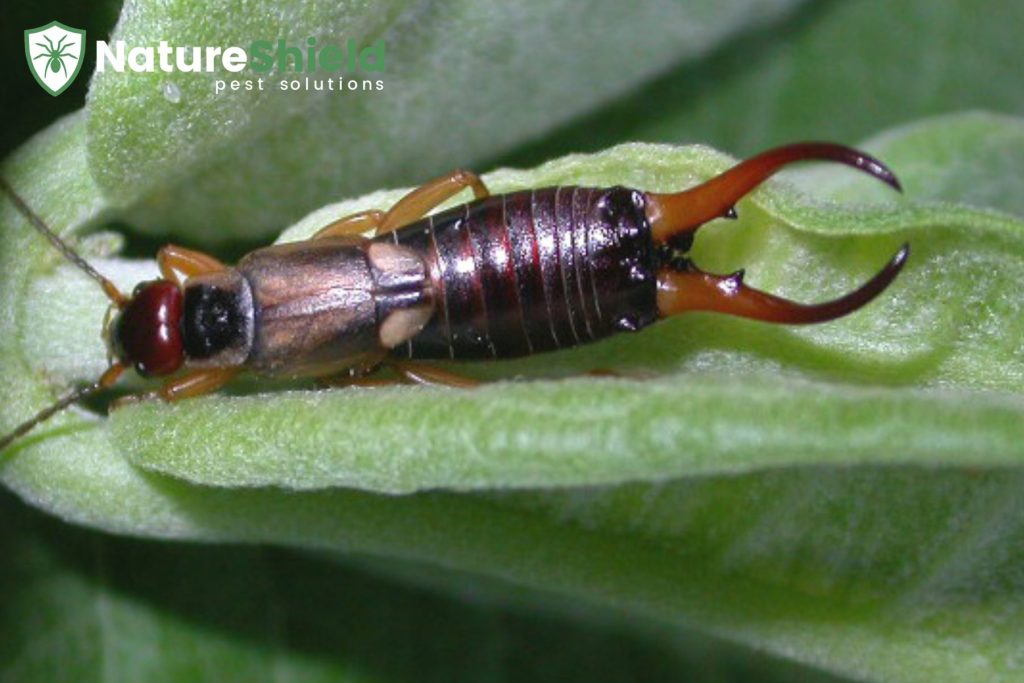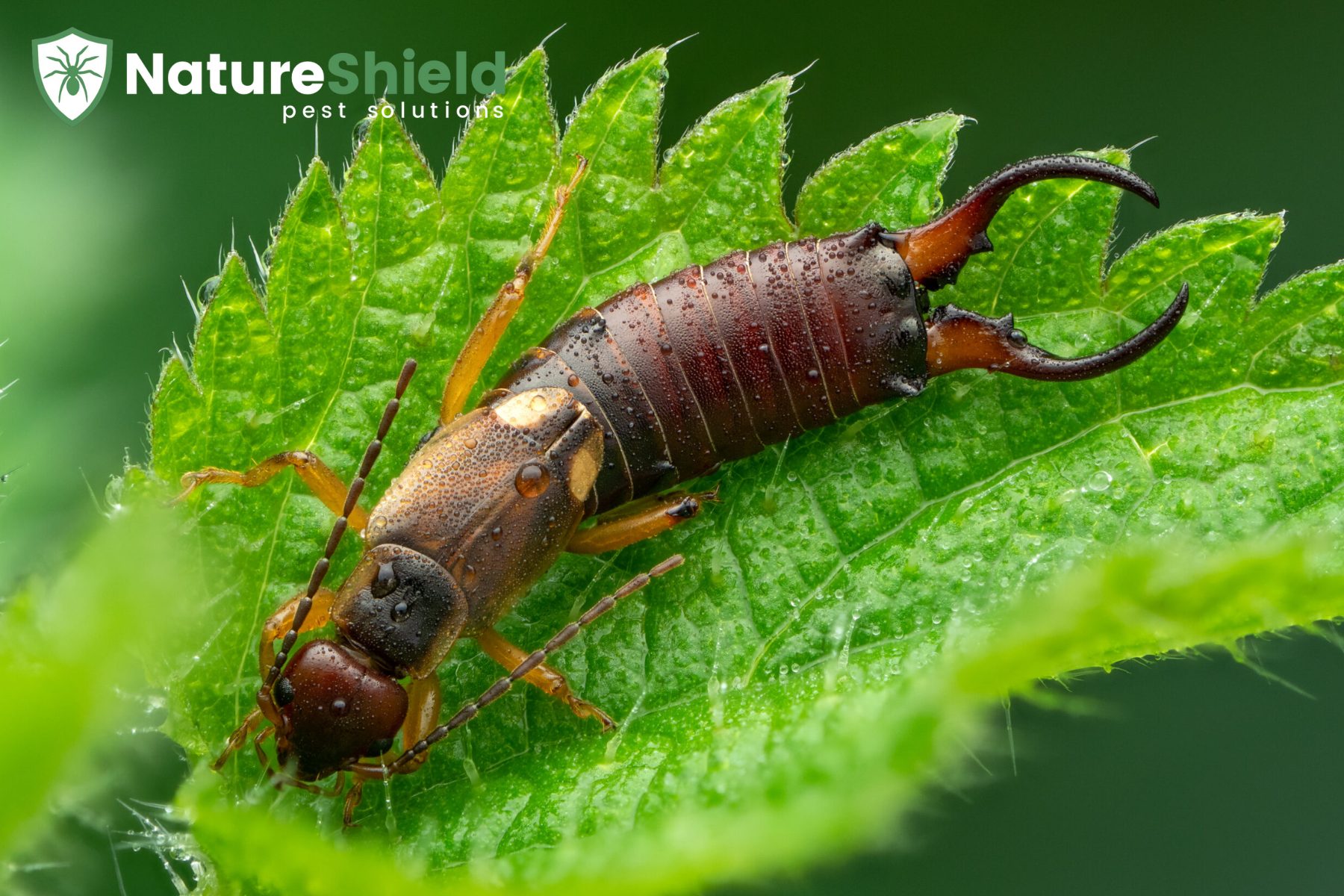Should You Be Worried About Earwigs in the Garden or House?
If you’ve spotted long-bodied insects with pincers crawling around your garden or sneaking into your bathroom, you’re likely dealing with earwigs. These nocturnal insects are a common sight in both outdoor and indoor spaces, especially in damp, shaded environments. But do they pose any real threat? Should you take action if you see them inside your home or near your plants?
This guide will help you understand what earwigs are, whether they’re harmful, and how to get rid of earwigs in the house or garden using safe, effective strategies.
What Are Earwigs?
Earwigs are small insects, typically ranging from ¼ to 1 inch long, with slender bodies and prominent pincers (cerci) extending from their abdomens. Although these pincers might appear threatening, they are primarily used for defense, mating rituals, and capturing prey.
Most earwigs are reddish-brown or dark brown and are active during the night. During the day, they hide in moist, dark places like mulch, under potted plants, or beneath logs. In homes, they may take refuge in bathrooms, basements, or laundry rooms anywhere moisture is present.
Are Earwigs Dangerous?
Let’s address the main concern: Are earwigs dangerous? The short answer is no. Despite their creepy appearance, earwigs are not harmful to humans or pets. They do not have venom, do not spread disease, and rarely pinch unless provoked.
However, they can be considered a nuisance for the following reasons:
- Unpleasant sightings indoors: Their sudden appearance in bathrooms or sinks can be disturbing.
- Potential for garden damage: While they also feed on decaying organic matter and small insects, earwigs may nibble on young seedlings, flowers, or soft fruits, especially during dry spells when other food is scarce.
- Indicator of moisture issues: Their presence inside often points to a moisture or humidity problem in your home.
In most cases, they don’t cause structural damage or infest homes in the same way as termites or roaches. But they can multiply in high numbers and become problematic if not addressed.
Do Earwigs Help or Harm the Garden?
Interestingly, earwigs can play both helpful and harmful roles in the garden.
Pros:
- Natural pest controllers: Earwigs eat aphids, mites, and other insect larvae that might otherwise harm your plants.
- Decomposers: They help break down organic matter, contributing to soil health.
Cons:
- Plant feeding: In large numbers, earwigs may chew on delicate seedlings, petals, and vegetables like lettuce, beans, or strawberries.
- Nighttime activity: Because they feed at night, you might not catch them in the act, leading to mystery damage on your plants.
If your garden has healthy biodiversity, earwigs may actually support your ecosystem. But if you notice visible plant damage, it may be time to take action.
How Do Earwigs Get Inside Your House?
Earwigs typically enter homes through small gaps in doors, windows, or foundation cracks especially during hot, dry weather or heavy rain when they’re seeking shelter.
Once inside, they gravitate toward damp areas such as:
- Under sinks
- Bathrooms and laundry rooms
- Crawl Spaces or basements
- Behind appliances
If you’ve noticed them indoors consistently, consider seeking help from experts in pest control Mexico who can diagnose the entry points and moisture issues attracting them.
How to Get Rid of Earwigs in the House
Here are proven steps for how to get rid of earwigs in the house:
1. Eliminate Moisture Sources
Earwigs thrive in humid environments. Use a dehumidifier in basements, repair leaky pipes, and ensure bathrooms have proper ventilation.
2. Seal Entry Points
Inspect your foundation, door frames, and window seals. Use weather stripping and caulk to close off gaps that may allow pests inside.
3. Remove Attractants Near the Foundation
Keep mulch, woodpiles, and leaf debris away from the base of your home. These moist, shaded areas are ideal nesting grounds for earwigs.
4. Use Traps
Roll up damp newspapers or cardboard and place them near where you’ve seen earwigs. In the morning, discard the trap (and earwigs). This method can help monitor population levels.
5. Consult a Pest Control Expert
If you’re dealing with a large infestation, reach out to professionals offering pest control Mexico MO. A technician will identify problem areas, apply targeted treatments, and offer preventative advice.
How to Manage Earwigs in the Garden
If earwigs are feeding on your plants, consider these garden-specific strategies:
Remove Hiding Spots
Clear out mulch piles, garden clutter, or plant pots that stay overly damp. Earwigs need shelter during the day, so reducing their hiding spots can disrupt their activity.
Use Natural Predators
Birds, frogs, and toads naturally feed on earwigs. Encourage these beneficial species by maintaining a diverse garden habitat.
Apply Diatomaceous Earth
Sprinkle food-grade diatomaceous earth around the base of plants. This non-toxic powder can damage the insect’s exoskeleton and reduce their numbers naturally.
Trap Them at Night
Set shallow containers filled with vegetable oil in the garden. Earwigs will crawl in and become trapped.
Avoid Overwatering
Damp soil encourages earwigs. Water your garden early in the day to allow surfaces to dry by nightfall.
When to Call for Professional Help
If you’ve tried all the methods above and still see large numbers of earwigs, or if they’re entering your home in noticeable quantities, it’s time to seek professional support. Partnering with a provider who specializes in earwig control near me can ensure that both your garden and your home are protected.
Professional treatments are often safer, longer-lasting, and more strategic than over-the-counter remedies or DIY traps.

Final Thoughts
So, should you be worried about earwigs in the garden or house? While they aren’t dangerous to people or pets, their presence can be unsettling and may indicate bigger issues like excess moisture or plant stress. In moderation, they can be beneficial in your garden but if their numbers get out of hand, they can damage plants and find their way indoors.
Taking preventative steps like sealing entry points, maintaining a dry environment, and monitoring garden conditions goes a long way toward controlling earwig activity. And when in doubt, professionals who specialize in pest control Mexico MO can provide safe, targeted solutions tailored to your space.
About Nature Shield Pest Solutions
Nature Shield Pest Solutions is a local, family-owned pest control provider serving Mexico, Missouri and the surrounding areas. We offer safe, environmentally responsible pest management solutions designed to eliminate pests like earwigs while keeping your family and pets safe. Whether you’re dealing with insects in the garden or uninvited guests indoors, our trained technicians deliver customized treatment plans with long-term results.


